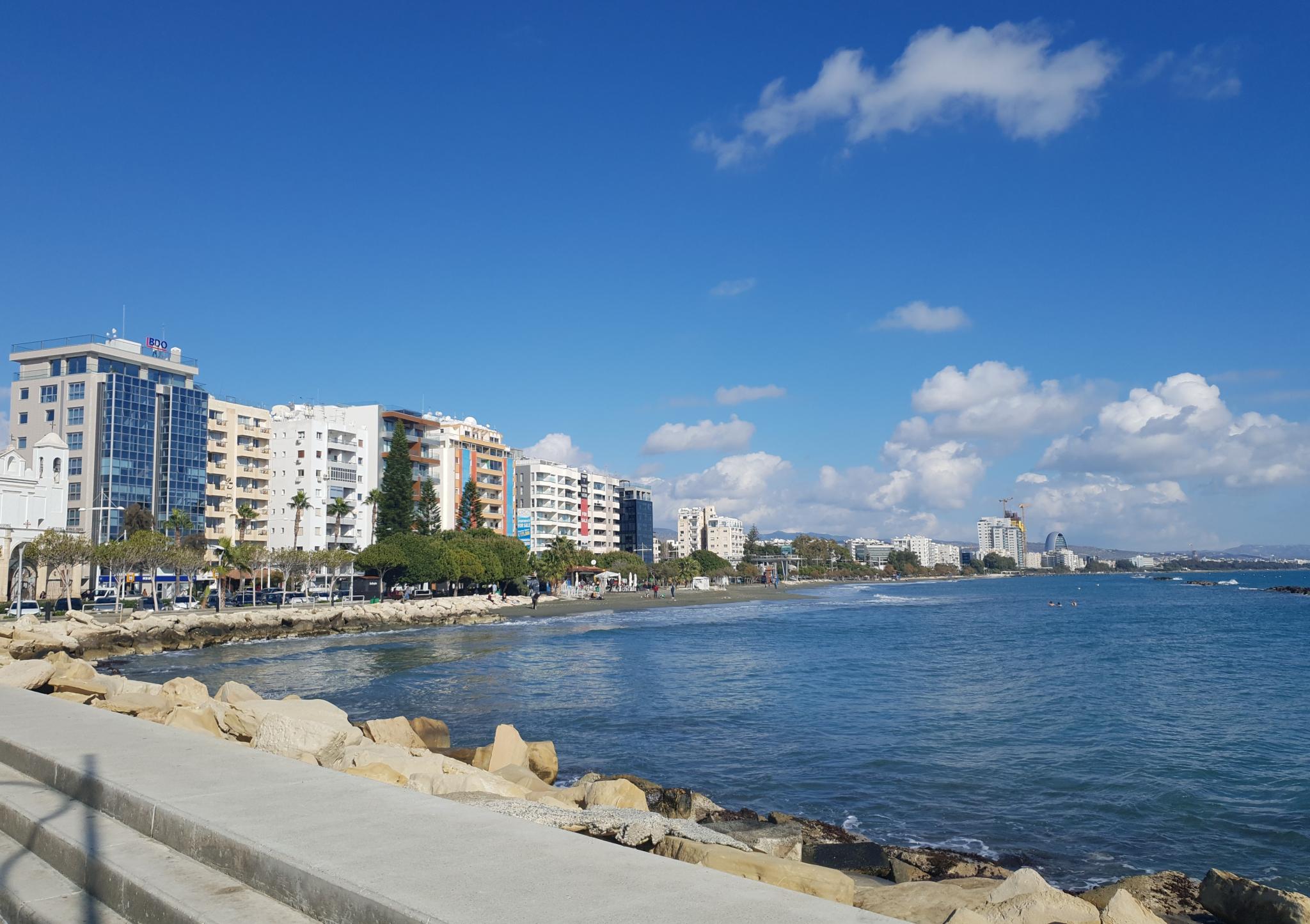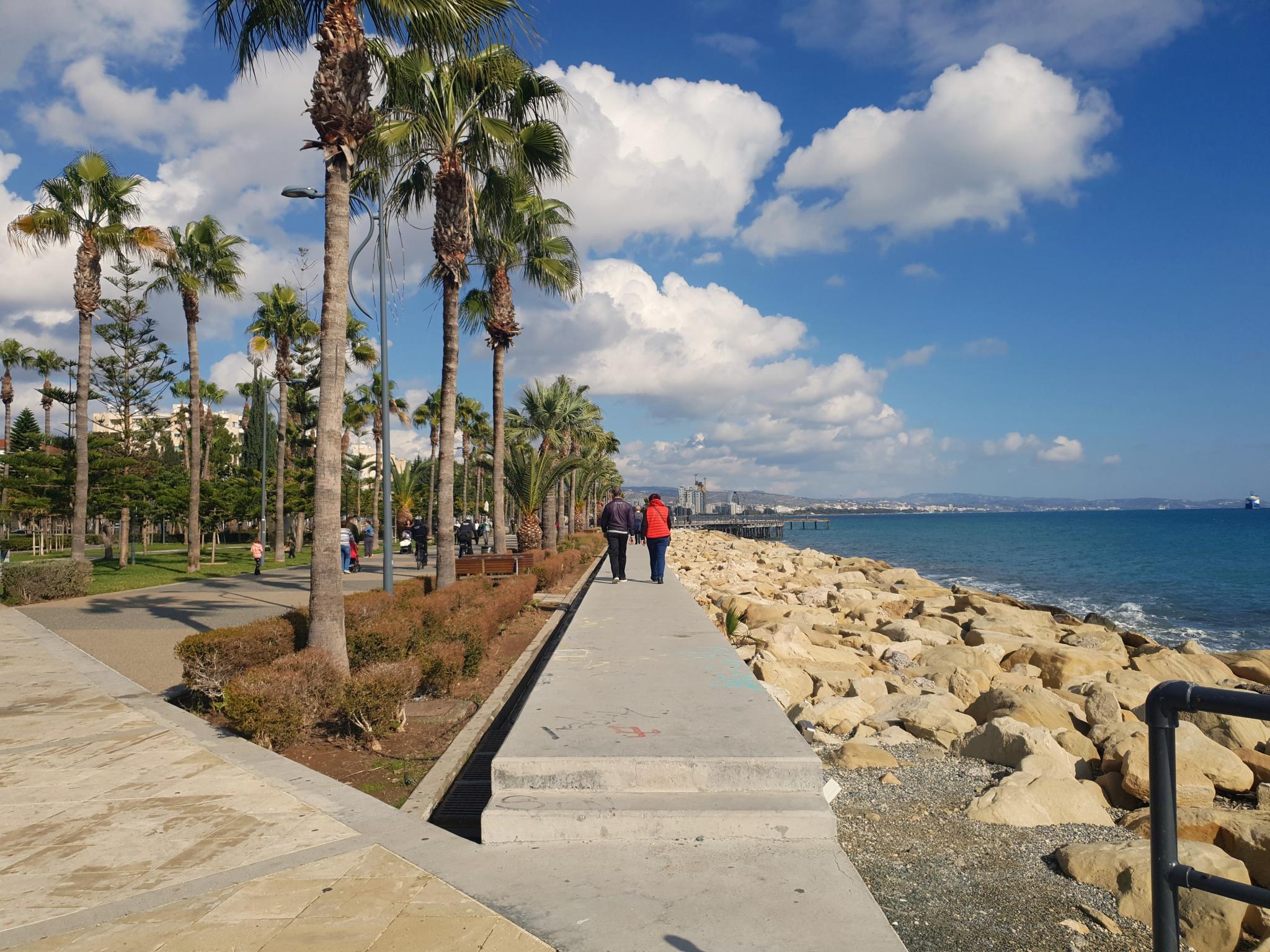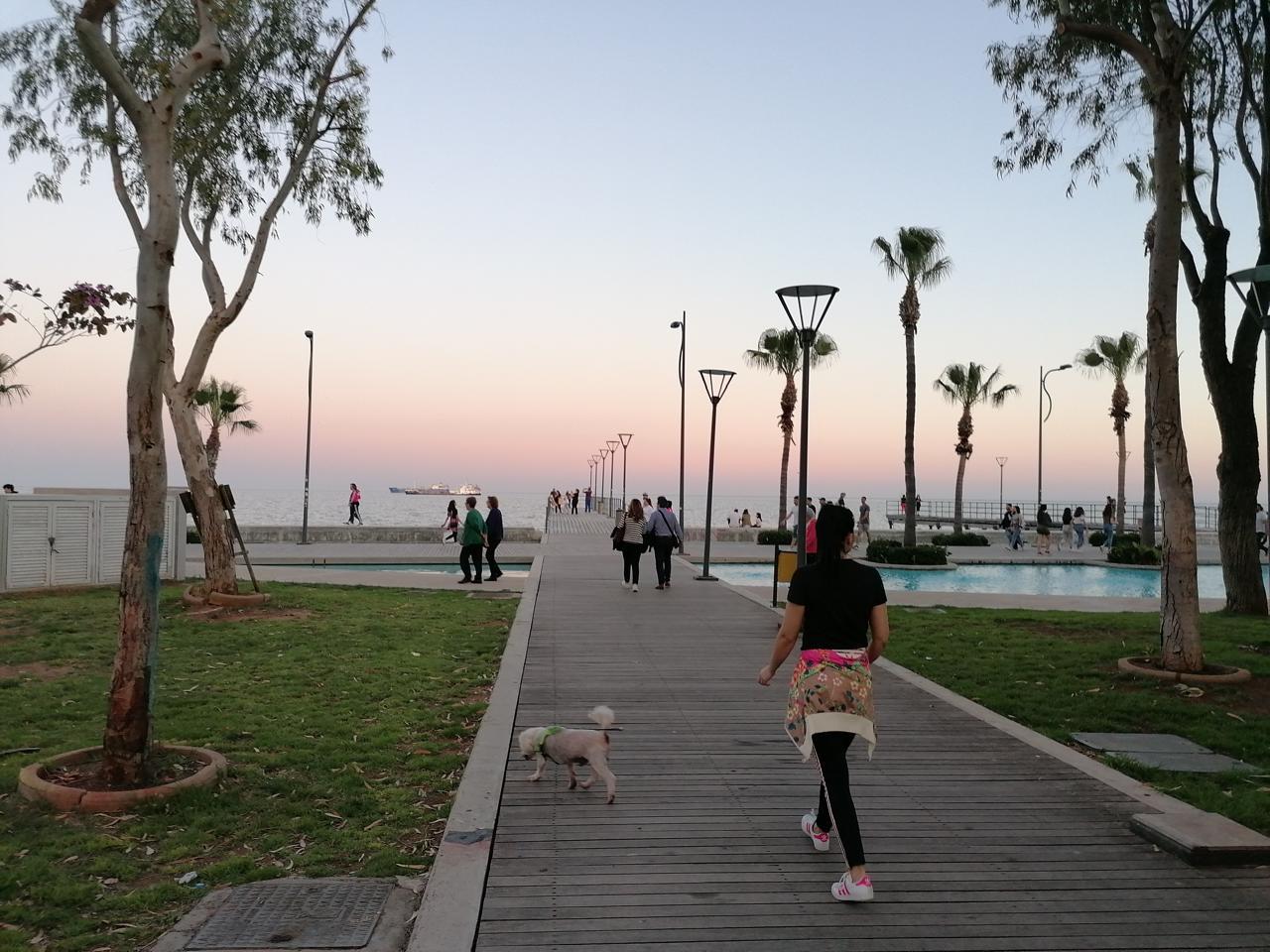Charalampos Spanos
Virtual Environments Lab, The Cyprus Institute, Nicosia, Cyprus
The port as a driving force for urban development and economic growth
Limassol Port is the main harbor operating in Cyprus. Since its establishment in 1973, it underwent multiple phases of expansion and continuously increased transportation of passengers and cargo (CPA, n.d.). This growth has significantly influenced the city’s rapid economic and demographic development and shaped its built environment. Limassol Port has contributed to a rise in tourism, creating a demand for more social and public spaces to accommodate the needs of the growing population. The regeneration of the waterfront, including popular public spaces such as Molos, a pedestrian area with greenery and beaches, and the Marina, featuring restaurants and bars, has become central to city life.


The port’s activities, and the economic prosperity they generate, have also altered the architecture of Limassol. High-rise residential projects along the waterfront have transformed the cityscape through the introduction of a new zone of high-value properties with scenic views of the port and the sea. This modern facade marks a shift from Limassol’s traditional low-rise architecture, thus reshaping the city’s identity.
This article examines the development of Limassol’s built environment by analyzing the port’s impact on the city. It explores who the key stakeholders involved in decision-making and future planning are, and focuses on the contemporary challenges both port and city are facing to balance growth with preservation and sustainability.
Moments of change
Throughout its history, Limassol faced key transition moments that are crucial to understanding its current trajectory. Looking back as far as the Ottoman occupation of Limassol (1571-1878), this place started out as a small town with fewer than 200 homes. With the arrival of the British colonial powers in 1878, investments in infrastructure, such as roads, administrative buildings, and port expansion, have transformed Limassol into an emerging port city. The continuing growth of industries – mainly wine and carob – in the 20th century boosted the city's economy and introduced zone planning; industrial activities were located toward the west and residential developments towards the north (Geddes, 2019).
In 1974, following the military coup in Cyprus and the invasion of the Turkish army, which resulted in the occupation of the northern part of the island, including the main port in Famagusta, the maritime activities of the port of Limassol gained new importance for the government. Limassol Port, which was completed in 1973, became the primary maritime hub for the Greek Cypriot-controlled south. This shift spurred rapid development and expansion of Limassol's port facilities (1982, 1995), transforming it into the largest and busiest port in Cyprus (CPA, n.d.; European Commission, 2023).
Another significant transition occurred in 2016 when DP World Limassol took over the multi-purpose terminal under a 25-year concession agreement, marking a shift towards modernizing the port with advanced infrastructure and sustainable practices, enhancing its role as a major trans-shipment hub in the Eastern Mediterranean. The ongoing STEAM project, a project that aims to improve the efficiency of sea traffic management for the Eastern Mediterranean Sea, suggests the port’s strategic focus is on integrating digital technologies to improve sea traffic management and operational efficiency (Philenews, 2019).
Understanding these moments of change provides context to the government of Limassol’s current efforts to balance economic growth with environmental sustainability. The establishment of the annual Blue Limassol Forum event in 2020 created opportunities for stakeholders to engage in discussions on a climate-adaptive and sustainable maritime industry and continues to bring together governmental authorities, private companies, and academia (Frederick University, 2024).
The port’s strategic initiatives, collaborations with stakeholders, and commitment to modernization underscore its evolving role in regional and global maritime activities. These transitions reflect a broader narrative of resilience and adaptation, with the municipality focusing on its participation in the “EU Mission Cities for 100 climate-neutral and smart cities by 2030” (Cyprus Mail, 2023), which will position Limassol as a key player in the maritime industry for the Mediterranean region.
A complex network of diverse stakeholders
DP World Limassol is a crucial stakeholder in the development and running of Limassol Port. As the operator of the multi-purpose terminal, responsible for “break-bulk, general cargo, Ro-Ro, oil & gas services, and passenger traffic” since 2016, DP World's interests lie in ensuring efficient and sustainable port operations, and enhancing its status as a key maritime hub in the Eastern Mediterranean (DP World, 2021). Its focus lies on modernizing infrastructure, improving operational efficiency, and integrating innovative technologies to support sustainable practices and economic growth. DP World collaborates with various other stakeholders, including government bodies such as the Cyprus Port Authority and the Ministry of Transport, aligning port operations with national policies and regulatory frameworks. Furthermore, DP World engages with other organizations through initiatives such as the Blue Limassol Forum to promote sustainability in the maritime sector of Limassol.
Nevertheless, the port’s operations continue to raise environmental concerns. Citizens frequently complain about ongoing seawater pollution, particularly during the summer months when it becomes particularly evident. The lack of adequate pollution level controls implemented by the responsible government and port authorities to maintain clean waters in maritime environments has led citizen associations, such as the Limassol Winter Swimmers and Friends Association, Akti Olympion, to seek for a debate with government bodies and demand solutions (KNEWS, 2024a).
Further environmental actors including the Green Party of Cyprus and local communities call for action regarding sustainability, ecologic protection, and public health. They argue that port activities contribute significantly to air and water pollution, considering recent pollution incidents (KNEWS, 2024a; KNEWS, 2024b).
Structured and ongoing dialogue among all stakeholders is essential to address these conflicts. Initiatives, such as the Blue Limassol Forum, facilitate discussion around integrating sustainable practices into port operations, with government officials and NGOs advocating for stricter environmental regulations and investment in green technologies to minimize pollution (Frederick University, 2024). The STEAM project is also helping DP World explore digital solutions for efficient and environmentally friendly port operations (WPSP, 2019).
The involvement of diverse stakeholders in Limassol Port’s operations reflects a complex network of interests that do not always align. While DP World focuses on operational efficiency and economic growth, local community members and environmental groups prioritize the protection of natural resources, public health, and citizens’ well-being. Government bodies, tasked with regulating and overseeing these operations, often find themselves balancing these competing priorities. This divergence in interests underscores the need for ongoing structured dialogue and collaborative solutions to develop practices that harmonize operational needs with the preservation of Limassol’s maritime environment.

Limassol’s future: Integrating the port and the city
Limassol as a port city faced significant challenges rooted in the conflicting values of economic growth and environmental sustainability. The expansion and modernization of the port to maintain competitiveness in the Mediterranean region often clash with efforts to mitigate pollution and protect local ecosystems.
The integration of Limassol's port in the city is crucial for sustaining its economic and social vitality. Since its dynamic expansion, after 1974, the port has been a primary driver of urban growth, shaping Limassol into a vibrant commercial and cultural hub. The connection between water and land has been facilitated by various developments, from infrastructural upgrades to community-focused projects. To sustain this integration, Limassol must continue to balance economic expansion with environmental sustainability and community well-being. Enhancing public spaces along the waterfront, such as promenades and parks, promotes social cohesion by bringing together diverse groups, including residents, tourists, and port workers, fostering a shared sense of place and recreational use of the waterfront.

Integrating green technologies and sustainable practices within the port operation is also critical. Examples include the use of PortXchange software for optimizing vessel arrival and reducing fuel consumption and emissions (CSN, 2024). Collaboration among stakeholders, such as the Cyprus Port Authority, DP World Limassol, local government, businesses, environmental NGOs, and residents, is essential. Regular dialogue and participatory planning processes can ensure that all stakeholders’ interests are considered, fostering a shared vision for the port's development. Further development of the municipality for multimodal transportation, such as bus and bike lanes, connecting the port with urban areas, can improve accessibility and ease the flow of goods and people. By prioritizing sustainable urban planning, technological innovation, and community engagement, Limassol can maintain a harmonious and productive relationship between its port and city, ensuring long-term prosperity and quality of life for its inhabitants.
Acknowledgements
This blog post has been written in the context of discussions in the LDE PortCityFutures research community. It reflects the evolving thoughts of the authors and expresses the discussions between researchers on the socio-economic, spatial and cultural questions surrounding port city relationships. This blog was edited by the PortCityFutures editorial team: Eliane Schmid.
References
CPA (n.d.). New Lemesos Port. Cyprus Ports Authority. https://www.cpa.gov.cy/en/new-lemesos-port [accessed: 11/11/2024]
CSN (2024). PortXchange urges Maritime Industry to prepare for EU Environmental Regulations. https://cyprusshippingnews.com/2024/02/09/portxchange-urges-maritime-industry- to-prepare-for-eu-environmental-regulations/
Cyprus Mail (2023). Environmental protection meets business innovation in Limassol. https://cyprus-mail.com/2023/05/27/environmental-protection-meets-business- innovation-in-limassol/
DP World (2021). DP WORLD LIMASSOL OPERATIONS BACK TO NORMAL. https://www.dpworld.com/cyprus/media/news-events/dp-world-limassol-operations- back-to-normal
European Commission (2013). Upgrade of Limassol port will allow major Cypriot shipping hub to accommodate more and larger ships. https://ec.europa.eu/regional_policy/en/projects/cyprus/upgrade-of-limassol-port- will-allow-major-cypriot-shipping-hub-to-accommodate-more-and-larger-ships
European MSP (n.d.). Platform Pilot MSP plan in Limassol (Cyprus). https://maritime-spatial- planning.ec.europa.eu/practices/pilot-msp-plan-limassol-cyprus [accessed: 11/11/2024]
Frederick University (2024). Blue Limassol Forum 2024 to focus on EU Mission for climate-neutral cities. https://www.frederick.ac.cy/en/latest-events/556-blue-limassol-forum-2024-to-focus-on-eu-mission-for-climate-neutral-cities
Geddes, I. (2019). Understanding the Mechanisms and Impact of Growth on the Urban Form and Functioning of Cities: An Application to the Case of Limassol. ATHENS JOURNAL OF MEDITERRANEAN STUDIES, 6(1), 39–66. https://doi.org/10.30958/ajms.6-1-3
KNEWS (2024a). Limassol’s recurring pollution problem: Calls for stronger government action. https://knews.kathimerini.com.cy/en/news/limassol-s-recurring-pollution-problem-calls-for-stronger-government-action
KNEWS (2024b). Pollution problems plague Cyprus ports: Fines issued as ships discharge waste illegally, raising environmental concerns. https://knews.kathimerini.com.cy/en/news/pollution-problems-plague-cyprus-ports
Philenews (2019). STEAM: CUT takes lead in empowering Limassol Port to become transshipment hub in the Eastern Med. https://in-cyprus.philenews.com/local/steam- cut-takes-lead-in-empowering-limassol-port-to-become-transshipment-hub-in-the- eastern-med/
WPSP (2019). Port of Limassol – STEAM project. https://sustainableworldports.org/project/port-of-limassol-steam-project/
